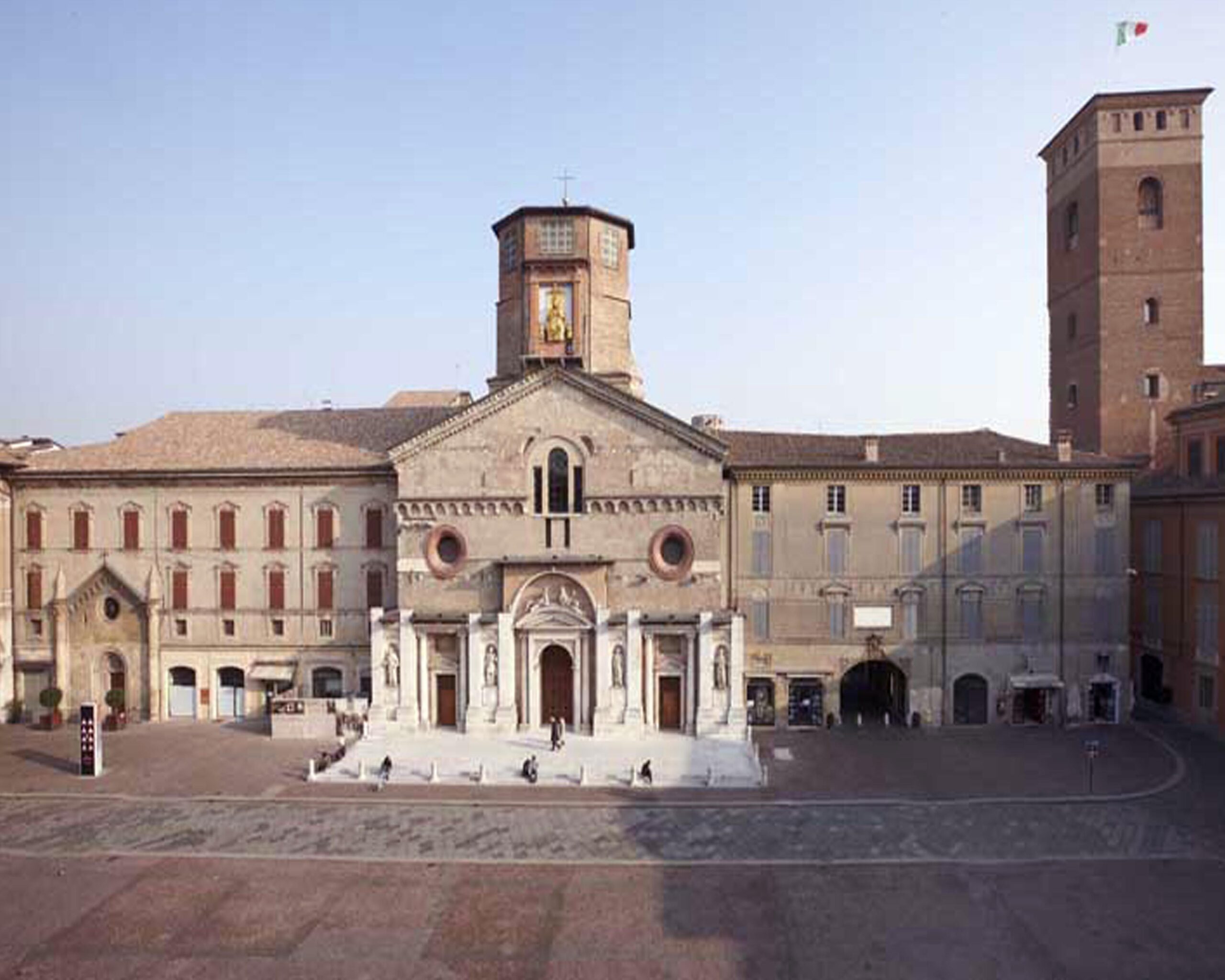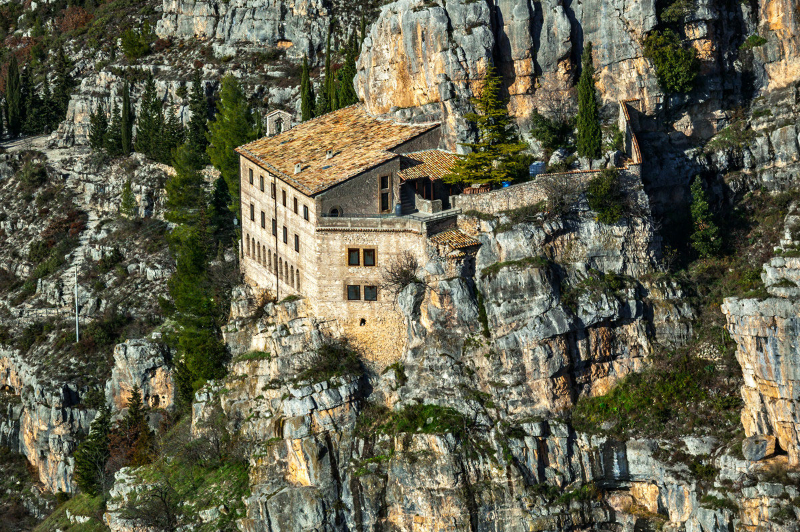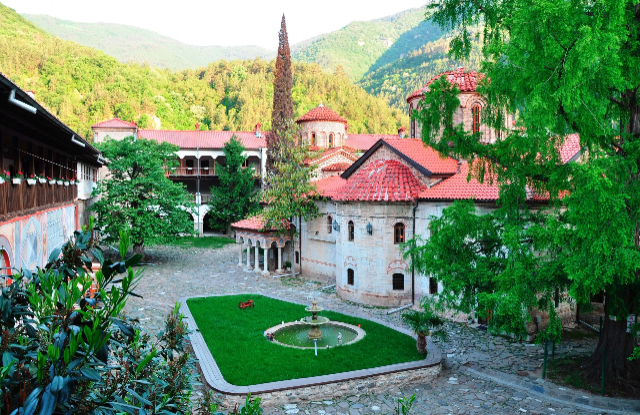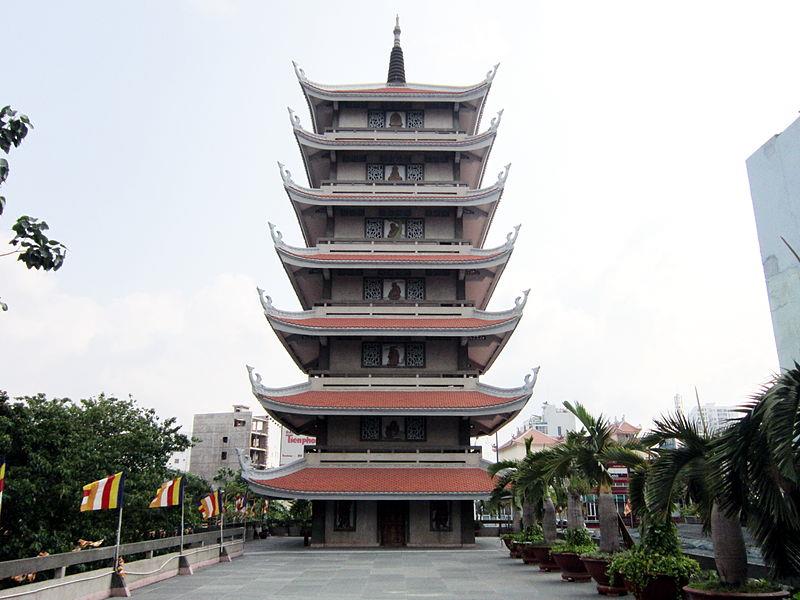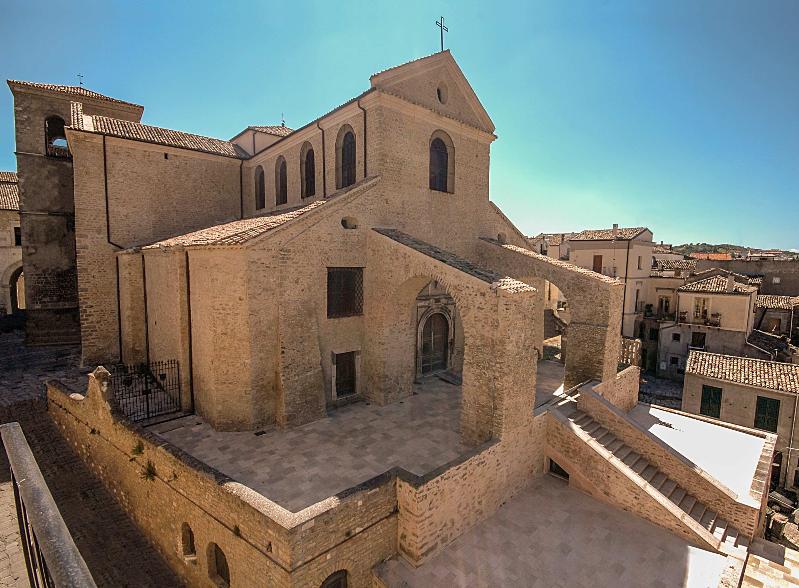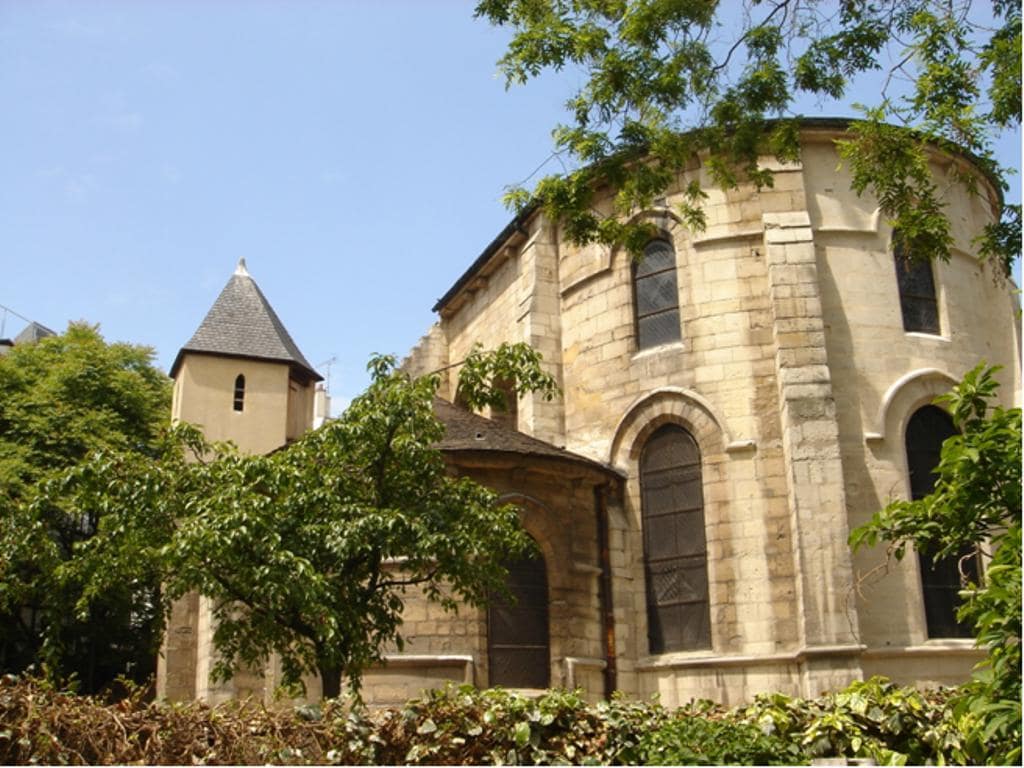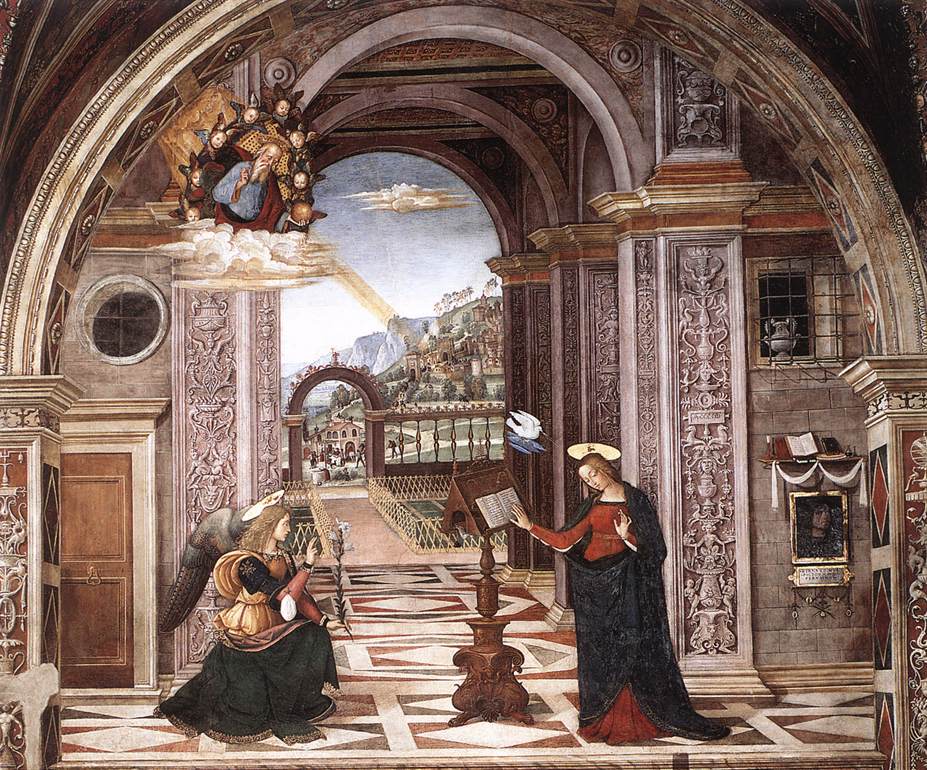Built on an ancient Roman building around 857, it underwent several transformations according to the Romanesque style. Towards the end of the 15th century, the style of the cathedral was adapted to the architectural canons of the time. Prospero Sogari, called the Clement, is the sculptor who takes care of the execution, however, remained incomplete. His works are the statues depicting Adam and Eve placed on the central portal, while on the sides between bands of marble covering the median surfaces of the facade within the niches there are the Saints Crisanto and Daria and the Saints Venerio and Gioconda, made by Clemente and his workshop between 1572 and 1580.
In the tower, on the facade, dominates the statue of the Madonna and Child with the Fiordibelli couple (benefactors) in gilded embossed copper plates, a masterpiece of goldsmith’s art made by an exceptional artist: Bartolomeo Spani from Reggio Emilia (goldsmith, sculptor, architect who lived between ‘400 and the first half of ‘500). The entire Duomo preserves chapels covered with precious marble and finely sculpted. Of note: the sepulchre of Orazio Malaguzzi (to the right of the entrance) by Clemente, the funeral monument of Valerio Malaguzzi (1510) by Bartolomeo Spani (3rd chapel on the right side), the Rangoni sepulchre (also by Clemente) and the Fiordibelli Chapel, with the Assumption of the Virgin Mary St. Peter on the Chair and St. Jerome (1626) by Giovanni Francesco Barbieri known as Guercino.
Inside the Cathedral, the Crypt dates back to the 12th or 13th century. Characterized by cross vaults, supported by 42 columns with fragmentary capitals, mostly 15th century (two date back to 1491, but also older), the oldest part contains the altar with the ark and the bodies of the Saints Martyrs Crisanto and Daria. The general restoration took place in 1923. During the work a remarkable fragment of Romanesque floor (mosaic of the 3rd-4th century) was found, which leads from the crypt floor through a small staircase into an underground space. In the mosaic are recognizable geometric figures and animals including the deer at the source, The crypt consists of three chapels: in the center the one with the tomb of the martyrs Crisanto and Daria, on the right one dedicated to those who died in war, decorated in 1923 by Anselmo Govi (below it a staircase leads to the tombs of the Bishops) and, on the left, a bas-relief with two Three Kings (thirteenth century) serves as the tombstone of the Bishop depicted on the back.
